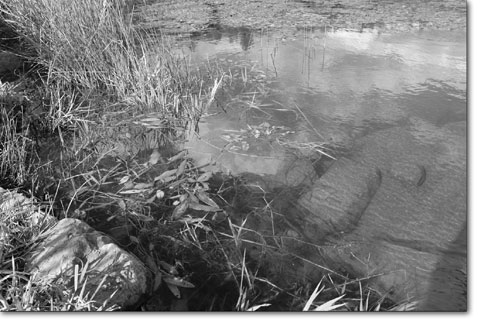| ||||
West Nile takes the summer off
by Will Sands As cooler temperatures move into La Plata County, the local population of mosquitoes is moving out. With the end of mosquito season, local health department officials are reporting a summer without a single human case of West Nile Virus in the region. While mosquito control districts are taking some of the credit for the drop in the disease, others are still concerned that spraying for mosquitoes presents the biggest danger of all. West Nile Virus first appeared in La Plata County in 2003. While symptoms of the disease tend to be mild, the risk of severe West Nile increases with age, and persons older than 50 can actually die from the disease. For those in the high-risk categories, contracting West Nile can result in severe neurological diseases like meningitis or encephalitis. Most victims, however, only experience mild flu-like symptoms La Plata County may have had concerns about West Nile hitting again this year. However, all of its residents apparently were spared the hardship of actually contracting the disease. In fact, not a single human case of the disease was reported this summer in La Plata, Archuleta or Montezuma counties. “There have been no human cases in our three-county area,” said Wano Urbonas, environmental health director of San Juan Basin Health Department. “In fact, we only had one positive result on a bird in the Durango area. We’ve been testing mosquito pools throughout the summer, and they’ve all come back negative.” The local picture was mirrored throughout the state, according to John Pape, epidemiologist with the Colorado Health Department. “We saw activity statewide, but at very low levels everywhere. We had no hot spots to speak of.” Urbonas explained that the health department declared an official end to mosquito season after last Thursday’s massive hailstorm. Since that time, the department’s traps have been all but empty. “After last week’s hailstorm, we’ve been checking our traps, and we’re getting only one or two mosquitoes,” Urbonas said. “We figured we’d just call it a season.” When West Nile Virus first arrived in 2003, La Plata County voters reacted strongly, and a majority of residents voted to double the size of the Animas Mosquito Control District’s budget. This year, the district will spend $439,760 on mosquito control within its boundaries, an area including Durango and marked by the Southern Ute Indian Reservation to the south, Baker’s Bridge on the north, Edgemont Ranch on the east, and Falls Creek on the west. Sterling Schaaf, the district’s manager, said that amount is “still not enough.” Like Urbonas and Pape, Schaaf related a nearly total absence of West Nile Virus in La Plata County. He also said that his district and the Florida Mosquito Control District are entitled to much of the credit. “We have seen no West Nile, and part of it is because of exceptional mosquito control,” Schaaf said. Schaaf said he believes the county is starting to reap the rewards of cumulative years of control. This year, the district began treating standing water for mosquito larva as soon as snow and ice receded. Once the mosquitoes started flying, the district sprayed a 30 percent Permethrin mixture, diluted 5 to 1 with mineral oil. Schaaf and the districts have consistently argued that Permethrin has no side effects and is the safest product on the market.
“The years past are helping us,” Schaaf said. “We also had really good results as far as larvaciding went.” Mosquito control did help somewhat with this year’s absence of West Nile, according to Pape and the Colorado Health Department. However, it was not solely responsible for this summer’s missing West Nile Virus. “In areas where you have actual mosquito control, it does reduce the risk,” Pape said. “But, you still have risks.” Looking back at this summer, Pape tells a more complex tale. Weather patterns and disruptions in the transmission of the virus from birds to mosquitoes to humans also were big components in this year’s West Nile shutout, he said. “This virus is maintained in a very complex cycle of birds interacting with mosquitoes based on weather dynamics,” he said. “The fact is, this year, we had unusual weather patterns that led to a late emergence of mosquito populations.” In addition to drops in the number of West Nile positives, the San Juan Basin Health Department saw residential complaints about spraying and violation of “no spray” lists drop off this summer. Urbonas said that the fewer complaints can be tied to the fact that there was less spraying this year, thanks to a focus on larvacide in the spring. “The number of residential complaints about spraying have been down,” he said. “I think a lot of that can be attributed to the district’s increased use of larvacide and the resulting need to do less spraying.” Though complaints are down, concerns about spraying still abound. Michael Rendon, director of the Fort Lewis College Environmental Center, has long been critical of a mosquito control program that he and others say focuses too much on spraying. “Now the district has twice as much money,” Rendon said. “Instead of creating a more wholistic approach to mosquito management, as far as I know, they just doubled the number of trucks and sprayers.” Looking at this year’s absence of West Nile Virus, Rendon argued that the virus has never actually been a serious threat locally. “I know it’s an issue for people who have it,” he said. “But I also think West Nile was blown way out of proportion. I wonder if people feel good about doubling the tax for something that was never really that big a deal.” As for coming years, Rendon advocated taking a broader approach than simply spraying for mosquitoes. He suggested the creation of an education program, the use of biological controls like bat houses and continued and expanded use of the relatively mild larvacides. Though the district is not concerned about the dangers of Permethrin, Rendon countered that the chemical has many unknowns and is an immediate threat to chemically sensitive people. “The main thing that bothers me is that there is no public education, and that the districts are not telling us when and where they’re going to spray,” Rendon said. “I think people would be much happier with it if these two things were happening.” There may be an opportunity to resolve these differences in coming years, since mosquito control is not going away and neither is West Nile Virus. “It’s hard to predict what next year will bring,” Urbonas concluded. “It’s become endemic to the area, so West Nile Virus is not going away.” •
|
In this week's issue...
- January 25, 2024
- Bagging it
State plastic bag ban is in full effect, but enforcement varies
- January 26, 2024
- Paper chase
The Sneer is back – and no we’re not talking about Billy Idol’s comeback tour.
- January 11, 2024
- High and dry
New state climate report projects continued warming, declining streamflows



